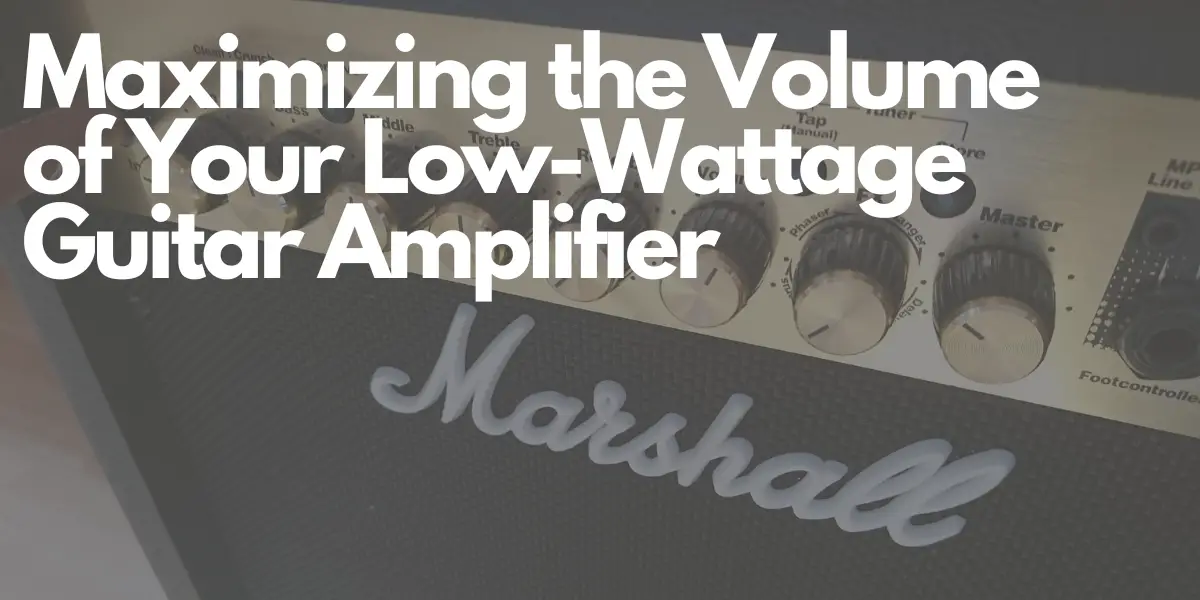Low-wattage guitar amplifiers are renowned for their portable design, user-friendly nature, and the ability to produce a delightful tone at modest volumes. Nonetheless, there are moments when a guitarist needs that extra boost in volume. Perhaps you’re trying to stand out in a band performance or just striving to optimize the performance of your amp. Here, we’ll delve into various methods to amplify your low-wattage amplifier’s output without compromising its sound quality or longevity.
Upgrading the Speaker
The speaker plays a pivotal role in determining your amp’s volume and tone. Upgrading it can bring about a noticeable difference. Here’s what to consider:
- Efficiency: Opt for speakers that have higher efficiency, as they’ll transform a greater portion of your amplifier’s power into audible sound.
- Size: A larger speaker, for instance, a 12-inch over an 8-inch, can displace more air, resulting in a louder sound.
- Sensitivity: Speakers with elevated sensitivity levels can produce a louder output.
Incorporating an Extension Cabinet
Introducing an extension cabinet equipped with a high-efficiency speaker can dramatically enhance your amplifier’s volume. Such a configuration facilitates more air displacement, translating to amplified sound and projection.
Thinking of an Attenuator
Attenuators, when positioned between the amplifier’s output and speaker, let you elevate the amplifier’s volume while concurrently reducing the sound output. This results in obtaining that much-desired tube amp tone even at reduced volumes.
Playing with Boost and Overdrive Pedals
These pedals can prod your amplifier into achieving tube saturation organically, which not only augments the volume but also provides a tonal lift. Popular pedals in this category include the Tube Screamer and Klon Centaur.
Fine-tuning the EQ
The EQ settings of your amplifier can significantly influence its sound perception. For instance:
- Augmenting the Mids: Upping the midrange frequencies can enhance sound projection, helping the amp to stand out.
- Diminishing the Mids: On the other hand, minimizing the midrange might give an illusion of heightened volume, especially pertinent for high-gain sounds.
Amplifying the Master Volume
Several low-wattage amplifiers come with distinct controls for gain and master volume. By elevating the master volume and modulating the gain, you can obtain a louder sound devoid of undue distortion.
Employing an Amp Stand
Positioning your amplifier on a stand lifts it off the floor, thus enhancing its sound projection. This is especially advantageous for compact combo amplifiers.
Trying Out Diverse Tubes
If your amplifier supports tube replacement, consider trying various tubes. Remember, tubes can influence both the tone and volume. It’s prudent to seek advice from a proficient technician or the manufacturer before making changes.
Using a Mic and a PA System
For grander venues, think about using a microphone with your amplifier and channeling it through a PA system. This approach bestows greater control over the volume and tone, assuring audience-wide coverage.
Practicing Sound Gigging Manners
Effective communication regarding volume levels with co-performers is vital. Maintaining balanced volume levels ensures clarity and an even mix.
In essence, elevating the volume of your low-wattage amp involves a mix of equipment tweaks and tactical adjustments. Remember, the aim is to attain the volume you desire without compromising on the tone or risking damage to the amp. As each amplifier and guitarist is distinct, a touch of experimentation might be necessary to strike the right chord. By adopting these strategies, you can truly harness the prowess of your amplifier, making it suitable for diverse musical scenarios.
Author: Mike P
Hi! My name is Mike! I’ve been an apartment producer/musician for 10+ years. I’ve played in punk bands, released EDM tunes on Beatport and iTunes, and have a semi-successful stock music portfolio. Read more…


